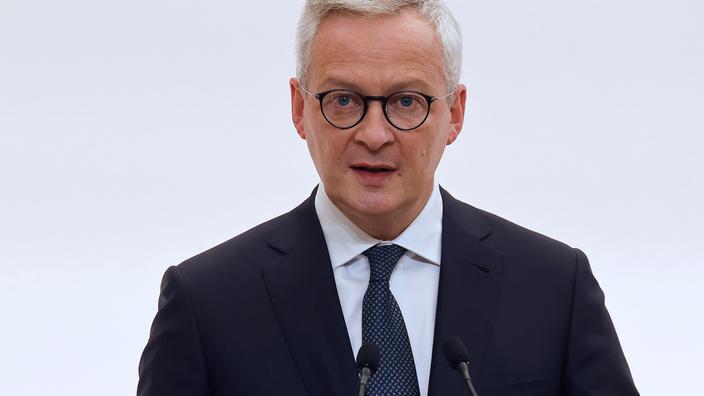7/10 for equity loans.
Le Figaro
8,000 SMEs and mid-cap companies will be affected by the participatory loan system (compared to the more than 650,000 loans guaranteed by the State), almost equity repayable over 8 years and guaranteed by the State at 30%.
The amount that can be borrowed by companies will be limited to 12.5% of 2019 turnover for SMEs of € 2 million up to € 50 million in turnover and 8.4% for those up to € 1.5 billion.
Read also: European green light for French participatory loans, a new tool for the recovery
The originality of the device lies in its financing: the banks which will grant the loans will keep only 10% of the amount of the loans in their balance sheets, in order to ensure the seriousness of the examination of the projects selected.
They will transfer the remaining 90% to funds that will have collected the money from life insurers, employee savings funds, or retirement savings funds.
To mobilize the latter, Bercy will guarantee up to 30% of the amount of funds.
The amount of this guarantee is estimated at 6 billion to 7 billion.
On the business side, it will be subordinated debt: a debt repayable once all other commitments have been repaid excluding equity participation by order of payment.
In other words, quasi-equity.
Operational until June 2022
The device will be operational from April or May 2021, until June 2022. The borrowable amount will be limited to 25% of the 2019 turnover in the event of accumulation with the EMP.
Companies that have borrowed an EMP and have not started to repay will not be able to apply for a participatory loan (a condition requested by the European Commission, which has closely examined this device so that it is compatible with the State aid regime. ).
In addition, PGE subscribers will have tougher conditions than others, 10% of 2019 turnover against 12.5% for SMEs and 5% for mid-sized companies against 8.4%: in the end, it is estimated that only 8,000 companies could be concerned, a figure to be compared with the 650,000 signatures of PGE.
Nevertheless, the government expects 10 to 15 billion euros in loans distributed by the banks.
In addition to this mechanism, investment funds should mobilize directly to offer subordinated bonds, redeemable in one go after 8 years, convertible bonds or “
Relance bonds
”.
The rates would be a little higher than for the loans.
Around 5% for SMEs and 6% for mid-sized companies, linked to higher management fees for investment funds.
“
Our desire is to invest in 2,500 SMEs / ETIs,
” predicts France Invest with tickets of 2 to 3 million for SMEs and 7 to 10 million € for mid-sized companies.
By way of comparison, Germany, through its economic stabilization fund, offers recapitalizations for 100 billion euros (purchase of recently issued ordinary shares, convertible bonds and silent holdings).
Small flat, the rate will be higher than for loans guaranteed by the State: from 4 to 5.5%, or even a little more depending on the file and for mid-sized companies.
There will be no amortization of the capital in the first 4 years.
This makes it possible to implement investments and give them time to produce effects.
However, interest will be payable from the first year.
Building strong levers
Will these 20 billion euros of participatory loans be enough?
The net cash flow of our companies would fall by nearly 100 billion euros over two years according to Rexecode.
The need for equity ranging from 50 to 100 billion ... Beyond this device, which it is not certain that in the long term it will really trigger 20 billion in financing for SMEs and mid-cap companies, all depending on the goodwill of insurers (and especially their prudential ratios).
It is high time to acquire strong levers to drain the savings of the French towards the equity of companies.
We need very incentive devices that do not bring into play the State guarantee and do not require paying interest, as there are in other European countries, for example investing part of your income tax or its tax on real estate in SMEs.
And as speed is an important factor in the dossier, a budget collective would be an ideal vector.









